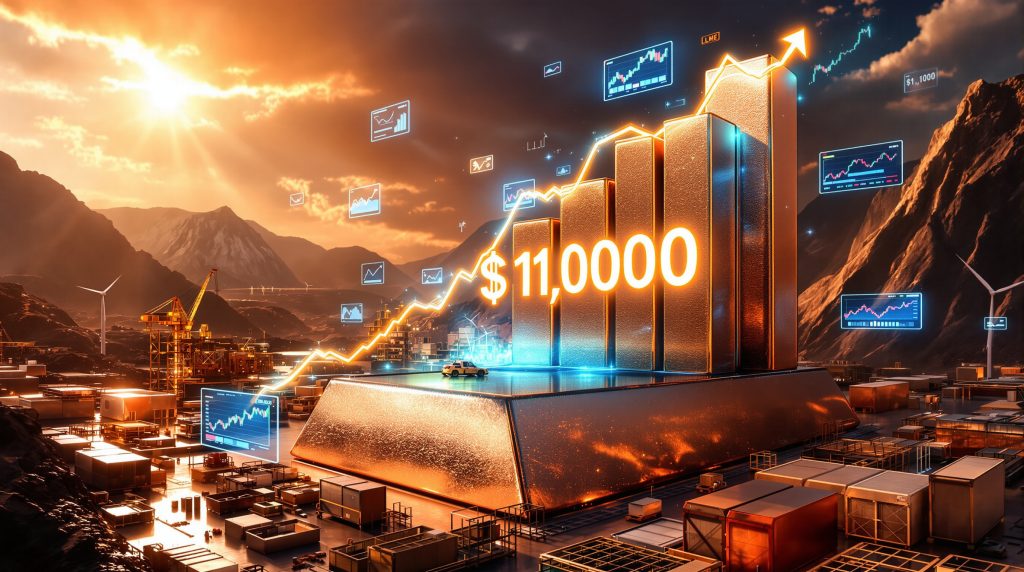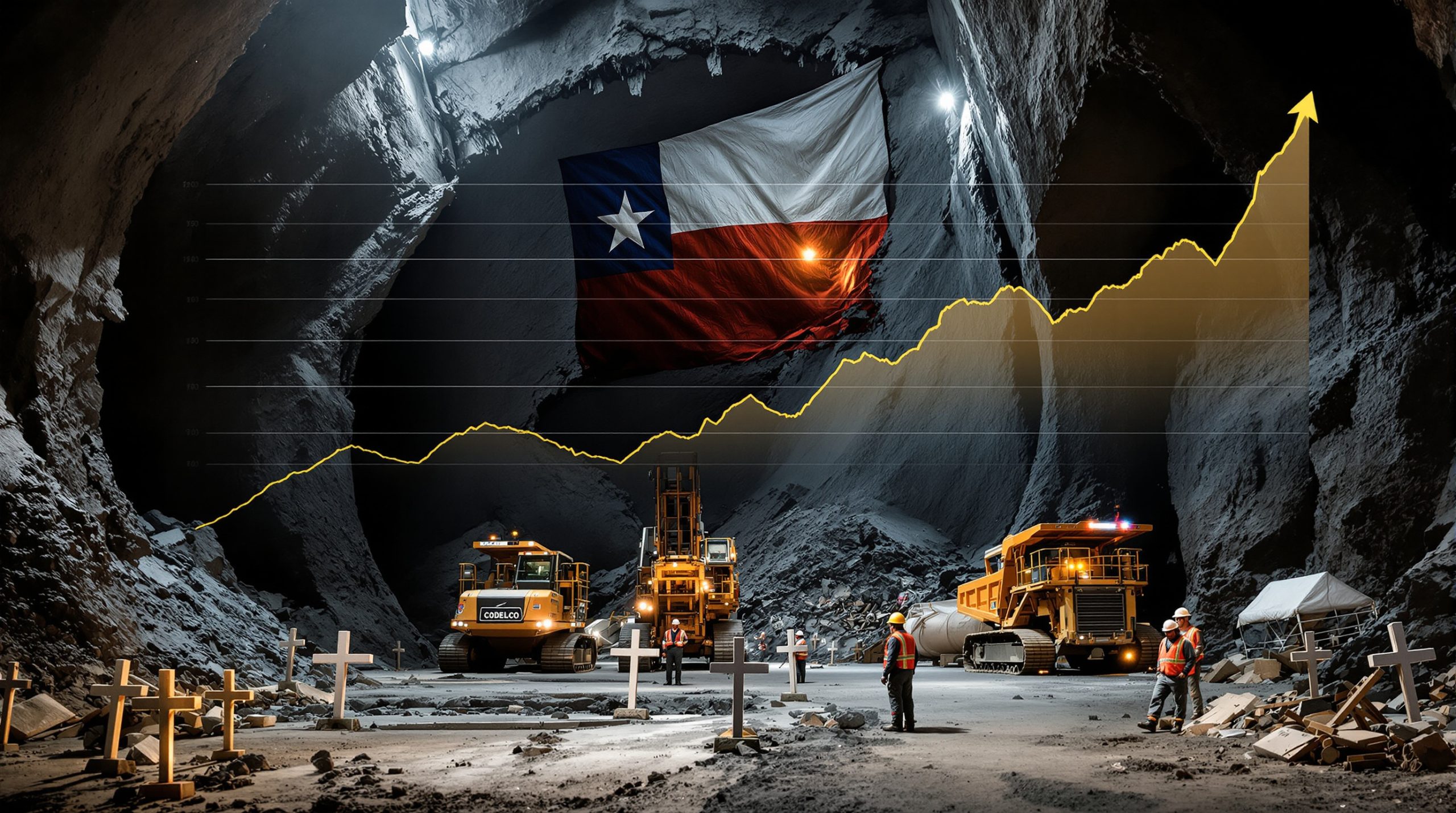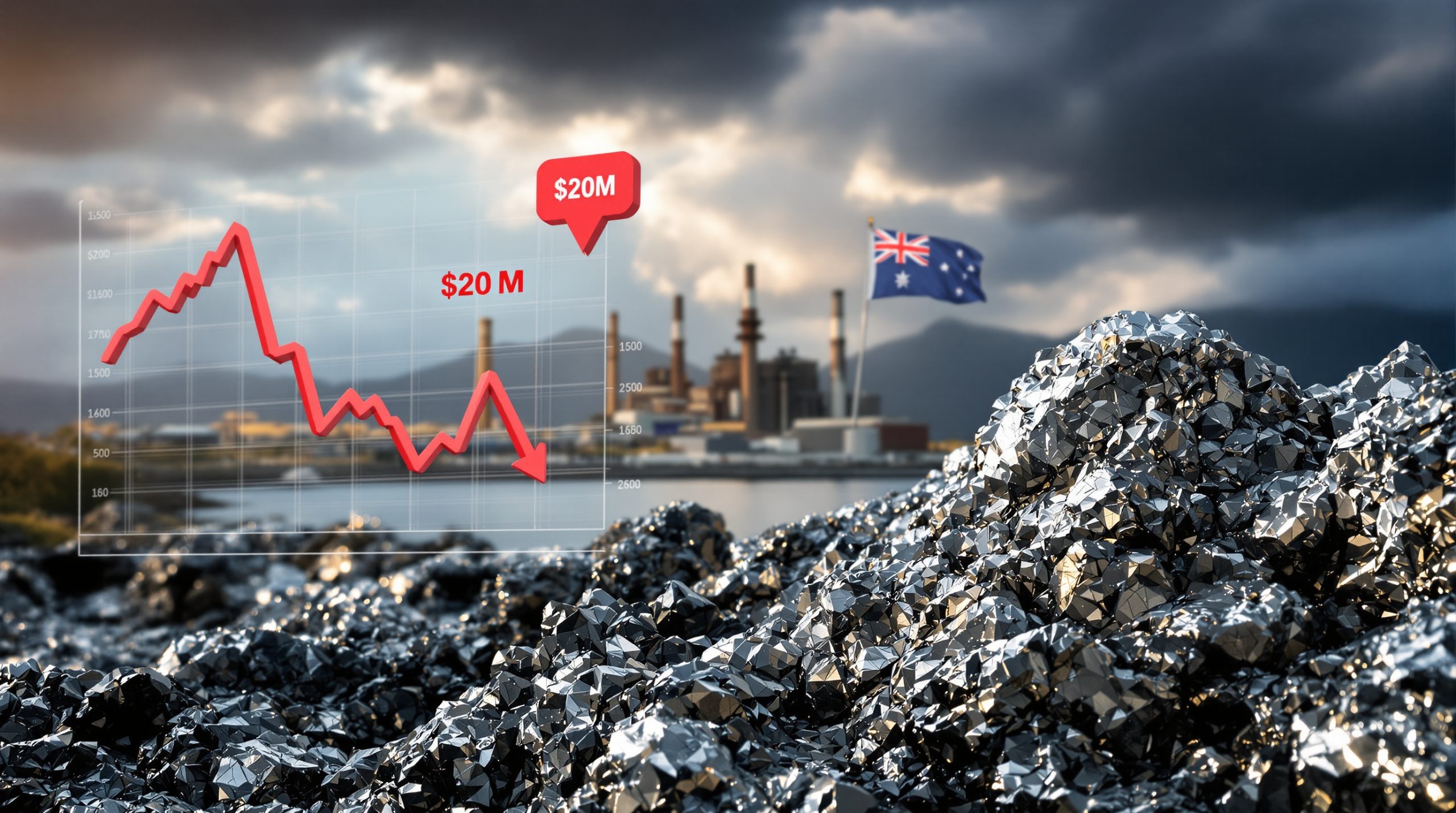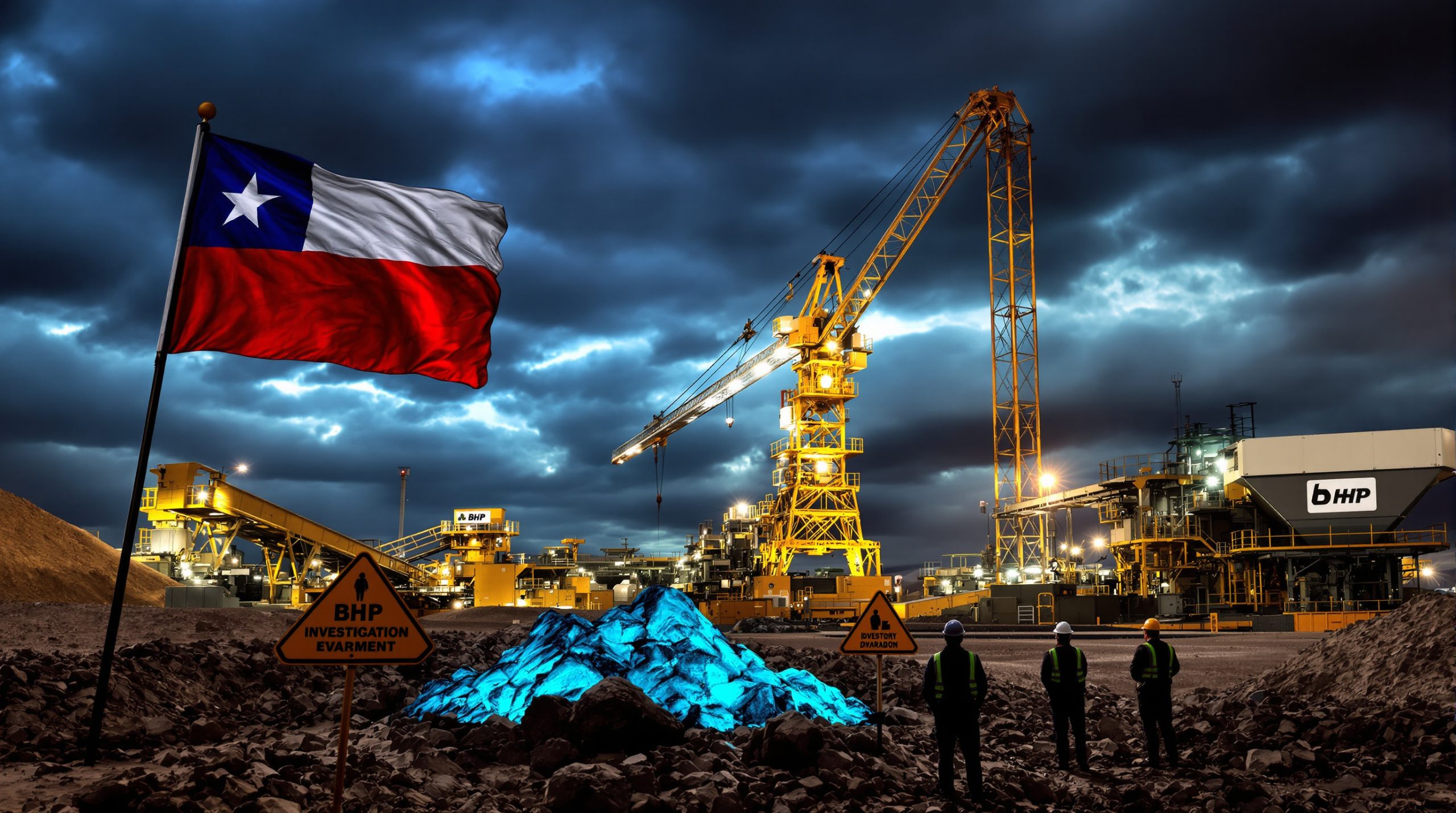Copper Price Surge: Why $11,000 Per Ton Signals a Market Transformation
The copper market has reached a significant milestone as prices touched $11,000 per metric ton, a level not seen since May 2024. This price surge, representing a 21% increase in 2025 alone, signals fundamental shifts in the metals market that extend beyond short-term fluctuations. As copper approaches its all-time high of $11,104.50, understanding the factors driving this rally reveals important insights about global economic conditions and future market trajectories.
What Supply Disruptions Are Driving Copper's Rally?
Major Mine Incidents Creating Production Shortfalls
Supply constraints have emerged as a critical driver of copper's upward momentum. The September 2025 mudslide at Indonesia's Grasberg mine—one of the world's largest copper operations—has significantly impacted global copper production forecast. This incident represents just one of several production disruptions affecting major copper-producing assets worldwide.
The impact of these disruptions is quantifiable. Industry analysts have revised expected production growth for 2025 downward from an initial 2.3% to just 1.4%, creating a substantially tighter market than previously anticipated. With each new operational challenge, the supply-demand imbalance grows more pronounced.
Project Delays Compounding Supply Concerns
Beyond immediate operational disruptions, the copper market faces challenges from delayed development projects that were expected to bring new supply online. Notable setbacks include:
-
Ongoing complications at Teck Resources' Quebrada Blanca II expansion
-
Suspension of operations at First Quantum's Cobre Panamá mine
-
Various permitting and technical challenges at development projects globally
These delays are particularly significant because they affect production capacity that market analysts had already factored into medium-term supply forecasts, creating a compounding effect on market tightness. The timeline for bringing substantial new copper supply online continues to extend further into the future.
How Is Demand Influencing the Copper Market?
Manufacturing Recovery Boosting Consumption
While supply constraints dominate headlines, demand-side factors are equally important in copper's price story. Manufacturing sectors in advanced economies, particularly in the United States, have shown stronger-than-expected recovery patterns throughout 2025. This industrial activity directly translates to increased copper consumption across various applications.
The manufacturing rebound has been particularly notable in sectors with high copper intensity, including electrical equipment, construction, and transportation. This demand resilience comes despite earlier concerns about potential economic slowdowns, demonstrating copper's essential role in both traditional and emerging industries.
China's Renewed Infrastructure Push
China, accounting for approximately half of global copper consumption, continues to significantly influence market dynamics. Recent fiscal stimulus measures and infrastructure investments have reinvigorated Chinese surging copper demand analysis after a period of economic uncertainty.
Specific demand drivers from China include:
-
Accelerated renewable energy deployment requiring substantial copper inputs
-
Expansion of AI infrastructure and data centers with high copper intensity
-
Ongoing urbanization projects maintaining baseline industrial metal demand
-
Grid modernization initiatives consuming significant quantities of copper wire and components
This renewed demand from the world's largest copper consumer, combined with the aforementioned supply constraints, creates a fundamental market imbalance supporting higher prices.
What Do Inventory Levels Tell Us About Market Conditions?
Exchange Stockpiles at Critical Levels
Copper inventories at major metal exchanges provide a crucial indicator of market tightness. Current stockpile levels at the London Metal Exchange remain notably low compared to historical averages, creating vulnerability to price spikes during demand surges.
This inventory situation represents both cause and effect in the current market dynamic. Low inventories serve as both a symptom of and contributor to market tightness. When visible stockpiles decline, market participants often become more concerned about securing physical metal, potentially accelerating price movements as buyers compete for available material.
Industry experts note that inventory data becomes increasingly important during periods of supply uncertainty, with small changes in stockpile levels potentially triggering outsized price reactions due to the market's heightened sensitivity.
How Are Investment Flows Affecting Copper Prices?
Speculative Interest Amplifying Price Movements
Beyond physical market fundamentals, copper's price surge has attracted significant speculative interest. As noted by Alastair Munro, senior metals strategist at broker Marex, the market is "seeing outside investment and doesn't have much experience of the power of it."
This investment flow can create self-reinforcing price cycles, where rising prices attract additional capital, further supporting upward momentum. The combination of fundamental tightness and speculative positioning has created particularly favorable conditions for price appreciation.
Market analysts note that copper's dual role—as both an industrial metal and an investment vehicle—can lead to price movements that sometimes exceed what physical supply-demand fundamentals might suggest, particularly during periods of changing macroeconomic conditions or shifting investor sentiment toward commodities.
What Are Financial Institutions Forecasting for Copper?
Major Banks Project Continued Strength
Leading financial institutions have issued increasingly bullish forecasts for copper prices, reflecting growing consensus around structural challenges in the supply chain and steady demand growth:
| Institution | Price Forecast | Timeline | Key Drivers Cited |
|---|---|---|---|
| UBS | $11,000/ton | End of 2025 | Supply deficits, demand growth |
| Goldman Sachs | $10,000-11,000/ton | 2026 onward | Structural supply challenges |
| Bank of America | $11,313/ton average | 2026 | Mine disruptions, potential peaks to $15,000/ton |
These projections suggest that many financial analysts see the current price levels as sustainable rather than transitory, with some forecasting even higher prices in the coming years based on persistent supply-demand imbalances.
How Does Copper's Price Affect the Broader Economy?
Implications for Industrial Sectors
Copper's price movements have significant implications across various industrial sectors due to its widespread use:
-
Construction: Higher material costs potentially impacting project economics and timelines
-
Renewable energy: Increased input costs for solar, wind, and grid infrastructure development
-
Electric vehicles: Cost pressures on EV production due to copper intensity in batteries and motors
-
Mining companies: Improved economics for producers with operational assets and expansion potential
These sectoral impacts illustrate how copper price hits $11 000 ripple throughout the global economy, affecting investment decisions, product pricing, and strategic planning across multiple industries.
Economic Indicator Function
As a widely used industrial metal, copper prices often serve as a barometer for global economic activity. The current price strength suggests underlying economic resilience despite various macroeconomic challenges, potentially signaling stronger-than-expected industrial activity.
Economists frequently refer to copper as "Dr. Copper" due to its perceived ability to predict economic trends, with price movements often preceding broader economic indicators. The current price strength suggests underlying economic momentum despite various macroeconomic challenges, contradicting more pessimistic economic outlooks.
What Factors Could Reverse Copper's Price Momentum?
Potential Market Headwinds
While current conditions support high copper prices, several factors could potentially reverse this momentum:
-
Resolution of production disruptions at major mines
-
Weaker-than-expected economic growth in key consumption regions
-
Acceleration of new mining projects entering production
-
Substitution effects as manufacturers seek alternatives to high-priced copper
-
Unexpected shifts in monetary policy affecting investment flows into commodities
These factors warrant monitoring as potential inflection points in the current price cycle, particularly as high prices themselves can eventually trigger supply responses or demand destruction that rebalance markets.
What Does Copper's Price Surge Mean for Investors?
Investment Implications
For investors, copper's price surge creates both opportunities and considerations across various asset classes:
-
Mining equities: Potential outperformance for producers with significant copper exposure and low-cost operations
-
Commodity indices: Support for broader commodity benchmark performance and resource-focused funds
-
Inflation considerations: Potential contribution to input cost inflation across industrial sectors
-
Supply chain investments: Increased focus on copper-intensive sectors and technologies
The metal's critical role in energy transition technologies also positions it as a potential long-term structural growth story beyond current cyclical factors. Furthermore, investors seeking exposure to decarbonization themes may benefit from exploring various copper investment strategies and industrial electrification opportunities.
How Will Copper Supply Respond to Higher Prices?
Production Response Mechanisms
Historically, high commodity prices stimulate supply responses through several mechanisms:
-
Increased production from existing mines (where technically feasible)
-
Acceleration of development projects in the pipeline
-
Expansion of exploration investment for new resources
-
Innovation in extraction and processing technologies to access previously uneconomic deposits
However, the copper industry faces unique challenges in rapidly expanding production, including declining ore grades at existing operations, longer development timelines for new projects, and increasing technical complexity of remaining resources.
These structural constraints suggest that even with strong price incentives, supply responses may be more muted than in previous commodity cycles. The industry faces a growing disconnect between the timeframe needed to develop new mines (often 7-10 years) and the accelerating demand growth from energy transition technologies. For instance, significant developments like the Argentina copper system overview represent important additions to global supply, yet still face considerable development timelines.
Conclusion: Is $11,000 Copper the New Normal?
The copper market's move to $11,000 per ton represents a significant milestone that reflects fundamental changes in supply-demand dynamics. While cyclical factors have contributed to the current price strength, structural elements—including energy transition demand and supply development challenges—suggest sustained support for higher price ranges.
For market participants across the value chain, from miners to end-users, this price environment creates both opportunities and challenges that will shape investment decisions, operational strategies, and technology development priorities in the coming years. As noted in recent copper price prediction insights, the copper market appears to be entering a new era where higher price ranges may become the norm rather than the exception, particularly as supply shortages continue to drive market dynamics.
Disclaimer: This analysis contains forward-looking statements about commodity markets. Future conditions may differ substantially from current projections due to unforeseen economic, political, or technical factors. Readers should conduct their own research before making investment or business decisions based on this information.
Want to Identify the Next Major Mineral Discovery Before the Market?
Stay ahead of the curve with Discovery Alert's proprietary Discovery IQ model, which instantly identifies significant ASX copper and mineral discoveries as they happen. Understand why major mineral discoveries can lead to exceptional returns by exploring our dedicated discoveries page.




